 Open Access
Open Access
ARTICLE
Edge Computing Platform with Efficient Migration Scheme for 5G/6G Networks
1 Department of Electronics and Communications Engineering, Zagazig University, Zagazig, Sharqia, 44519, Egypt
2 Department of Computer Sciences, College of Computer and Information Sciences, Princess Nourah bint Abdulrahman University, P.O. Box 84428, Riyadh, 11671, Saudi Arabia
3 Department of Information Technology, College of Computer and Information Sciences, Princess Nourah bint Abdulrahman University, Riyadh, 84428, Saudi Arabia
4 Department of Applied Probability and Informatics, Peoples’ Friendship University of Russia (RUDN University), Moscow, 117198, Russia
5 Center for Telecommunication Research, School of Postgraduate Studies & Research, Sri Lanka Technological Campus, Padukka, 10500, Sri Lanka
* Corresponding Author: Amel Ali Alhussan. Email:
Computer Systems Science and Engineering 2023, 45(2), 1775-1787. https://doi.org/10.32604/csse.2023.031841
Received 28 April 2022; Accepted 08 June 2022; Issue published 03 November 2022
Abstract
Next-generation cellular networks are expected to provide users with innovative gigabits and terabits per second speeds and achieve ultra-high reliability, availability, and ultra-low latency. The requirements of such networks are the main challenges that can be handled using a range of recent technologies, including multi-access edge computing (MEC), artificial intelligence (AI), millimeter-wave communications (mmWave), and software-defined networking. Many aspects and design challenges associated with the MEC-based 5G/6G networks should be solved to ensure the required quality of service (QoS). This article considers developing a complex MEC structure for fifth and sixth-generation (5G/6G) cellular networks. Furthermore, we propose a seamless migration technique for complex edge computing structures. The developed migration scheme enables services to adapt to the required load on the radio channels. The proposed algorithm is analyzed for various use cases, and a test bench has been developed to emulate the operator’s infrastructure. The obtained results are introduced and discussed.Keywords
Fifth-generation (5G) and sixth-generation (6G) cellular systems are expected to play a major part in enhancing our life in many fields [1,2]. With new requirements, many novel services and applications are announced as preliminary use cases of the 5G/6G networks [3]. These extreme requirements include ultra-high availability and reliability, ultra-high-speed of gigabits and terabits per second, and ultra-low latency of millisecond and sub-millisecond [3,4].
These requirements introduce high constraints on the design of communication networks for such systems [5]. Moreover, implementing the Internet of Things (IoT) with 5G/6G systems puts a new constraint on dense deployment since the number of connected gadgets is likely to increase dramatically to be of a density of million devices per Km2 [6,7].
The emergence of the concept of haptic Internet, which enables the real-time transmission of human touch and actuation besides existing audio and video transmission, raises many challenges associated with the communication network structure. Since such networks require an end-to-end delay of one millisecond that is impossible with the current traditional network structures due to light limitations [8,9]. Therefore, the concept of ultra-low latency communications is emerging as a part of the 5G/6G network implementation, as per the international telecommunication union (ITU), for the international mobile telecommunication system (IMT2020/IMT2030), and the third-generation partnership project (3GPP), for 5G/6G systems [10–12].
System components place considerable limits on context, information, and mobility to ensure the best system accessibility and reliability and the ultra-low latency required for haptic Internet systems [13,14]. Industry and research organizations are constantly seeking to create and apply novel technologies and models in communication networks, such as the distributed edge computing, e.g., mobile edge computing (MEC) and fog computing, artificial intelligence (AI), software-defined networking (SDN), blockchain, and network function virtualization (NFV), in order to maintain growth and fulfill ever-changing demands [15–18].
MEC is a recent technology that enables the realization of the main requirements of 5G/6G systems and provides a path for network innovations [19]. The expected massive services can be managed through the MEC platform with an adaptable quality of services (QoS). However, the integration of MEC units, mainly with the 5G/6G core networks, requires a proposer design of the MEC platform to facilitate network management [20]. Furthermore, the introduction of MEC facilitates the interaction of network operators.
Another challenge with the MEC paradigm is the resources management that achieves the highest energy, latency, and utilization efficiency [21–23]. MEC platform hosts end-user’s services, and thus it requires an efficient offloading scheme to manage the process of data offloading based on the available resources and the service requirements [24–26].
Using MEC servers end-devices’ complex jobs can be migrated to edge servers via wireless connections, alleviating the problems of insufficient processing capacity and mobile terminal battery capacity [27]. However, this requires an efficient migration scheme to manage such a process [28]. Using migration techniques, end-devices send their computing-intensive activities to remote devices for execution, then use remote resources to augment local resources before returning the results [29,30].
This work considers developing a complex MEC structure for 5G/6G systems. A novel migration scheme is developed to facilitate the hosting of complex computing tasks seamlessly for end-users. An energy and latency-aware offloading scheme is considered for the developed structure. The ultimate contributions of the work can be summarized as follows.
1) Developing a MEC platform that deploys an orchestrator for managing the hosted services. The various parts of the developed platform are introduced with each module’s objectives.
2) Developing a seamless migration scheme for the considered MEC structure. The developed migration scheme enables services to adapt to the required load on the radio channels.
3) Analyzing the developed algorithm for different use cases.
4) Developing a testbench to emulate the operator’s infrastructure.
5) Evaluating the performance of the developed system and the migration algorithm with the considered offloading scheme.
2 Background and Related Works
MEC is a novel paradigm that provides high-bandwidth, low-latency, and higher scalability to applications that can be handled at the access network’s edge [31]. Task migration is a significant approach to alleviating end-device resource restrictions. MEC-based systems require efficient migration schemes to achieve the required QoS [32]. The current task migration schemes make migration decisions based on the assumption that the migration service node has been established. Such schemes do not consider cases in which multi-service nodes are available, and they can’t fully use the characteristics and benefits of the mobile edge computing paradigm [33,34].
The job is completely transferred as a migration object for cloud computing-based systems, which necessitates a significant amount of migration capacity. Existing migration schemes can be categorized into three main groups based on the executing device and the scale of the migration process. The first category includes all schemes that execute the application in the cloud server. The second category is the migration schemes that migrate applications to cloud servers, where they are executed. The third category involves a partial migration process, as a part of the tasks are migrated to the cloud server while the other tasks are performed locally [33–36]. This section considers the existing migration and offloading schemes for 5G/6G systems.
In [33], the authors developed a migration scheme for complex mobile tasks in a MEC-based mobile network structure. The proposed migration scheme is energy-efficient, as a genetic-based algorithm has been developed to achieve the minimum energy consumption for the migration process. The migration scheme has been validated via simulation processes.
In [35], the authors have considered the problem associated with the decision of data offloading to MEC serves based on the mobility of end devices. The article provides a deep Q-learning neural network (DQN)-based task migration technique for MEC-based systems. The neural network handles the task migration without understanding the users’ mobility patterns. The model can learn the best migration policy based on past experiences without knowing the users’ mobility patterns ahead of time. The model has been validated via simulation processes.
In [37], the authors relieve the current MEC server’s computation and communication load by shifting computing tasks to other MEC servers. The article provides an offloading scheme for MEC-based vehicular networks, taking into account channel the conditions and computation costs. The authors have developed a migration and resources allocation model based on deep reinforcement learning. By adaptive learning, the developed algorithm was able to find the best offloading and migration policy.
In [38], authors have developed a novel migration scheme and task caching technique based on a genetic algorithm for MEC-based networks. They modified the fine-grained migration strategy. Simultaneously, in order to reduce task execution delay and energy usage, a caching technique has been developed. Moreover, an evolutionary algorithm was used to investigate the caching and fine-grained migration strategies, taking into account the edge cloud cache capacity’s restrictions. Thus, the developed scheme can obtain the best task migration technique for an end-device that satisfies both the energy-usage efficiency and best edge caching.
In [39], the authors considered the problem of computational offloading in MEC-based vehicular networks. They defined a cooperative offloading problem, in which, the task offloading, migration, and computation procedures are modeled using queuing theory. The main objective of the work was to reduce the task handling latency. The authors have developed a probabilistic computation offloading model that addresses the defined problem. It allows the MEC server to make online scheduling decisions independently based on the estimated allocation probability. The proposed algorithm has been validated via simulation processes.
In [40], the authors proposed a novel MEC structure using an intelligent computation offloading and artificial intelligence (AI). The introduced migration model depends on a prediction process of computing task. This has been provided on the base of the size of the task offloaded from mobile users, and the performance parameters of edge computing nodes. The Long short-term memory (LSTM) neural network has been used to predict tasks. In order to optimize the offloading process, the offloading strategy for end devices has been achieved based on the LSTM’s predicted tasks. Task migration has been introduced to assist the optimization process. Experimental evaluation of the proposed architecture and algorithm achieved higher latency efficiency with the increase of network data and subtasks.
The novelty of the developed work comes from the considered complex structure of the MEC platform. The deployment of a MEC orchestrator represents a strength of the developed platform. Furthermore, the developed migration scheme is a seamless one that distributes the load on the radio channel.
3 MEC Platform for 5G/6G Networks
5G systems consist of two main parts; the radio access network (RAN) and the core network. The design of each part and even the interaction between the two parts play an important role in achieving the announced 5G specifications. MEC is one of the key enablers of the RAN and a critical component in integrating both the RAN and the core network. The core network has many functions that should run separately or interact with others. On the other hand, a more software-based naming convention is adopted for network operations because the architecture of the core of the 5G networks is constructed utilizing cloud-native technology, including a service-based architecture (SBA) [41]. Service-based architecture is a recent paradigm introduced for the core network to enable core network functions. Fig. 1 presents the service-based architecture with the MEC platform used for 5G systems.

Figure 1: Service-based architecture with MEC platform for 5G systems
The MEC unit deploys an orchestrator responsible for managing the MEC platform. In a 5G network, network procedures and services are identified by the network resource function (NRF) module. Application-generated services in MEC platforms are defined using a service registry. In order to make use of a service, if authorized, the network function can directly interact with another function producing the service. The network exposure function (NEF) serves as a centralized point of influence on the service process. Also, it plays a crucial role in accepting all access requests from other systems.
Authentication-related procedures are handled by the authentication server function (AUSF). The network slice Selection function (NSSF) helps select the appropriate network slice elements for users and allocate the necessary access management functions (AMF). Policies and rules of the 5G system are handled by the policy control function (PCF). The unified data management (UDM) function is another part that is in charge of a number of services relating to users and service subscriptions. It generates authentication credentials, handles user identification information, manages access authorization (such as roaming restrictions), and registers the user serving network functions.
The user plane function (UPF) is a critical part responsible for integrating the platform with the 5G network. Therefore, UPF is considered as a distributed and flexible data plane from the MEC system’s standpoint. The management of this data plane, i.e., the configuration of traffic rules, is now performed via the NEF-PCF-SMF route. Consequently, the local UPF may even be part of the MEC implementation in some specific deployment methods.
Thus, MEC host layer functional objects are most often deployed in the data network of a 5G system. Whereas the NEF, as a core network function, is a system-level object deployed centrally along with similar functions. The NEF can also be deployed to provide access to ultra-low latency, high spectral services with the MEC host.
4 Network Segment Architecture
This section introduces the developed dynamic algorithm to provide low-loss session migration for applications. The proposed method turns the application into a docker image. This approach simplifies the installation process and excludes operating system matching errors.
A testbed has been assembled for our study. The developed testbed is presented in Fig. 2. It consists of remote cloud service, four local edge computing, i.e., MEC, servers, and an operator network infrastructure. The considered network infrastructure fully duplicates the carrier network and consists of evolved packet core (EPC) elements. It is integrated with the Operations support system (OSS). The EPC network elements were placed in Docker containers.

Figure 2: Testbed setup
The proposed algorithm allows the application to migrate to the user maintenance state. The method assumes the reduction of session resets in order to provide comfortable migrating for end users. Fig. 3 presents the main steps of the developed migration algorithm.
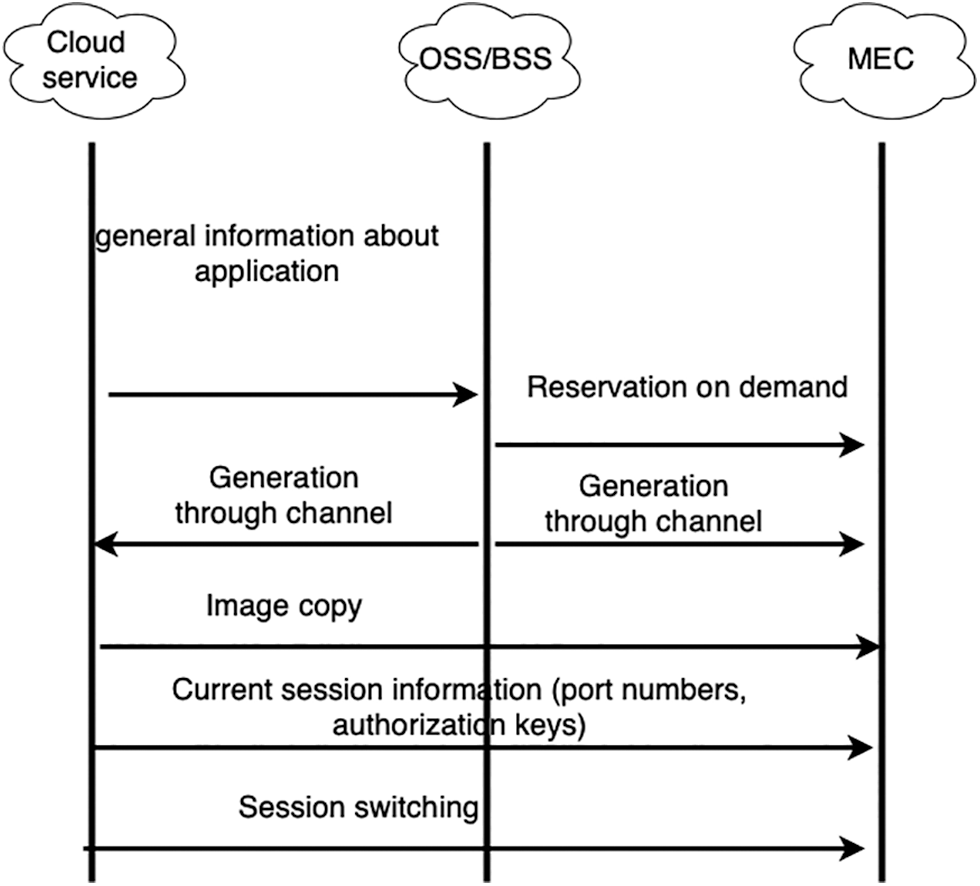
Figure 3: Signal flow of the developed migration algorithm
When migrating, the remote server tells the MEC node all the information about the user to maintain service continuity. Operation support systems/business support system (OSS/BSS) is provided as a universal tool for managing third-party integrated services. It is applied to the interaction between the cloud server and the MEC node.
The DOCKER container-based migration has to take into account the cached data of each user and the ports from which the session is served. Thus, the proposed method first sends the Docker image, installs and runs it in the MEC node, and only then starts migrating users.
In this section, the developed system is evaluated using simulation processes. The proposed migration scheme over the developed MEC-based 5G network, with the structure introduced in Figs. 1 and 2, has been evaluated. The considered offloading scheme is our previously introduced energy and latency-aware algorithm, presented in [42].
The Home Subscriber Server (HSS) of the LTE virtual network, deployed on OpenAirInterface software in a cloud server, was chosen for the experiment. Using the REST API approach, HSS access the network controller and the evolved packet core (EPC) services. A different number of active sessions were considered to investigate the impact on the migration scheme, as active sessions directly connect to the HSS.
A different number of sessions were simulated to get accurate estimates. The number of iterations was 100. Each time after establishing sessions, HSS migrates to the MEC.
The system is then simulated using our previously developed offloading scheme, introduced in [42]. For the simulation processes, we considered three heterogeneous systems. The first of them is the traditional network structure with fog computing as the distributed edge paradigm, the second system is the network structure with traditional MEC platforms, while the third system is the developed MEC structure implementing the offloading scheme introduced in [42]. The considered simulation parameters are introduced in Tab. 1. Ten heterogenous computing tasks are considered for the evaluation process, with workloads of the real tasks.

As shown in Fig. 4, after 1100 ms, the migration process began. During the migration time, the number of open sessions is reduced and returned to a steady state once the migration process is completed. This is due to the packet loss during the migration process. The average time of the migration process and packet loss rate during the migration process have been recorded.
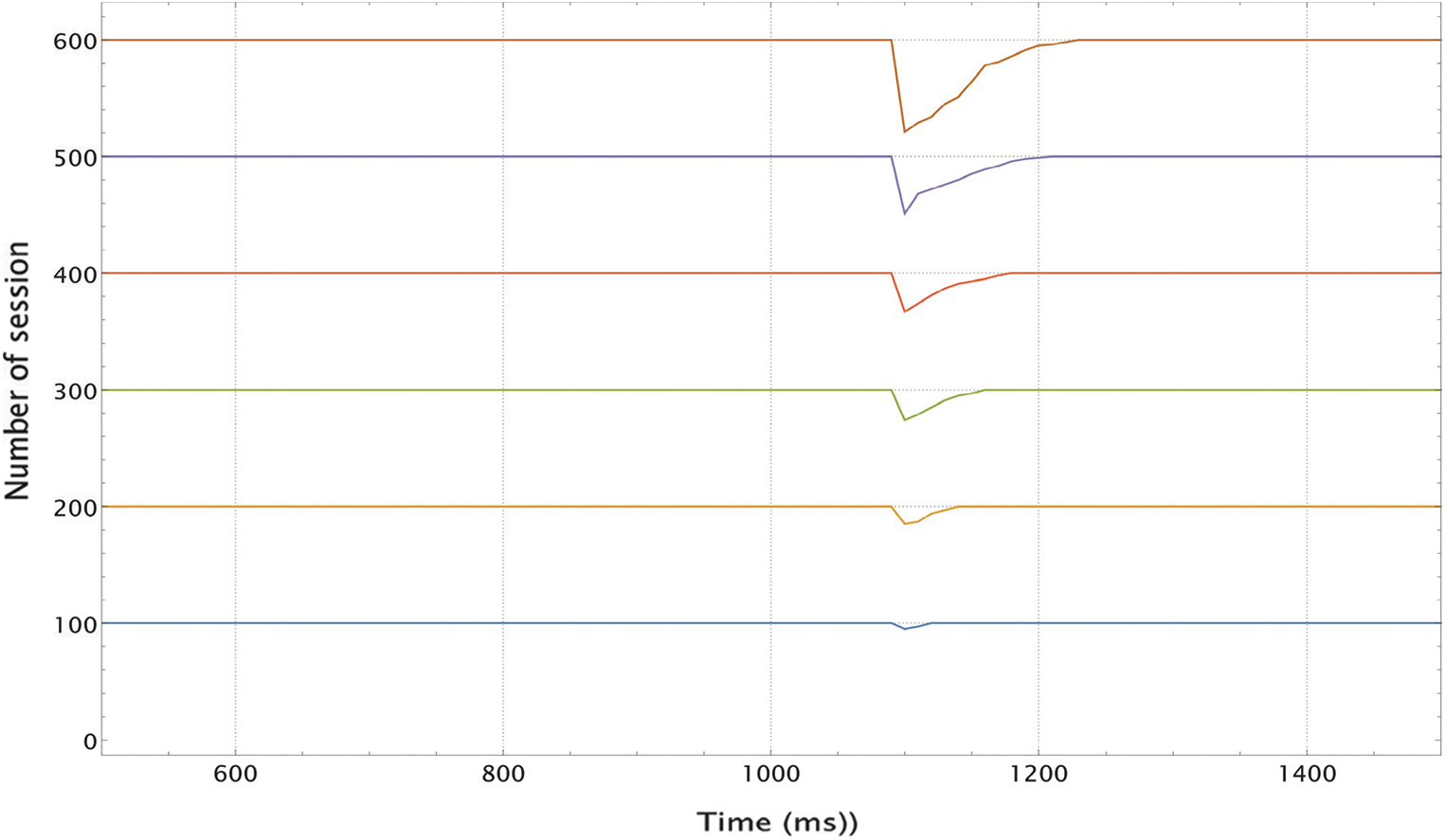
Figure 4: The number of active sessions with the time, with the involvement of the migration process
Fig. 5 shows an example of one of the experiments with a maximum of 600 active sessions. The highlighted area represents the time during which the migration process took place. During the migration process, the number of packet loss increases, which reduces the number of active sessions. However, in the proposed scheme, this loss rate is reduced to a minimum, and thus, the change in the sessions is minimum.
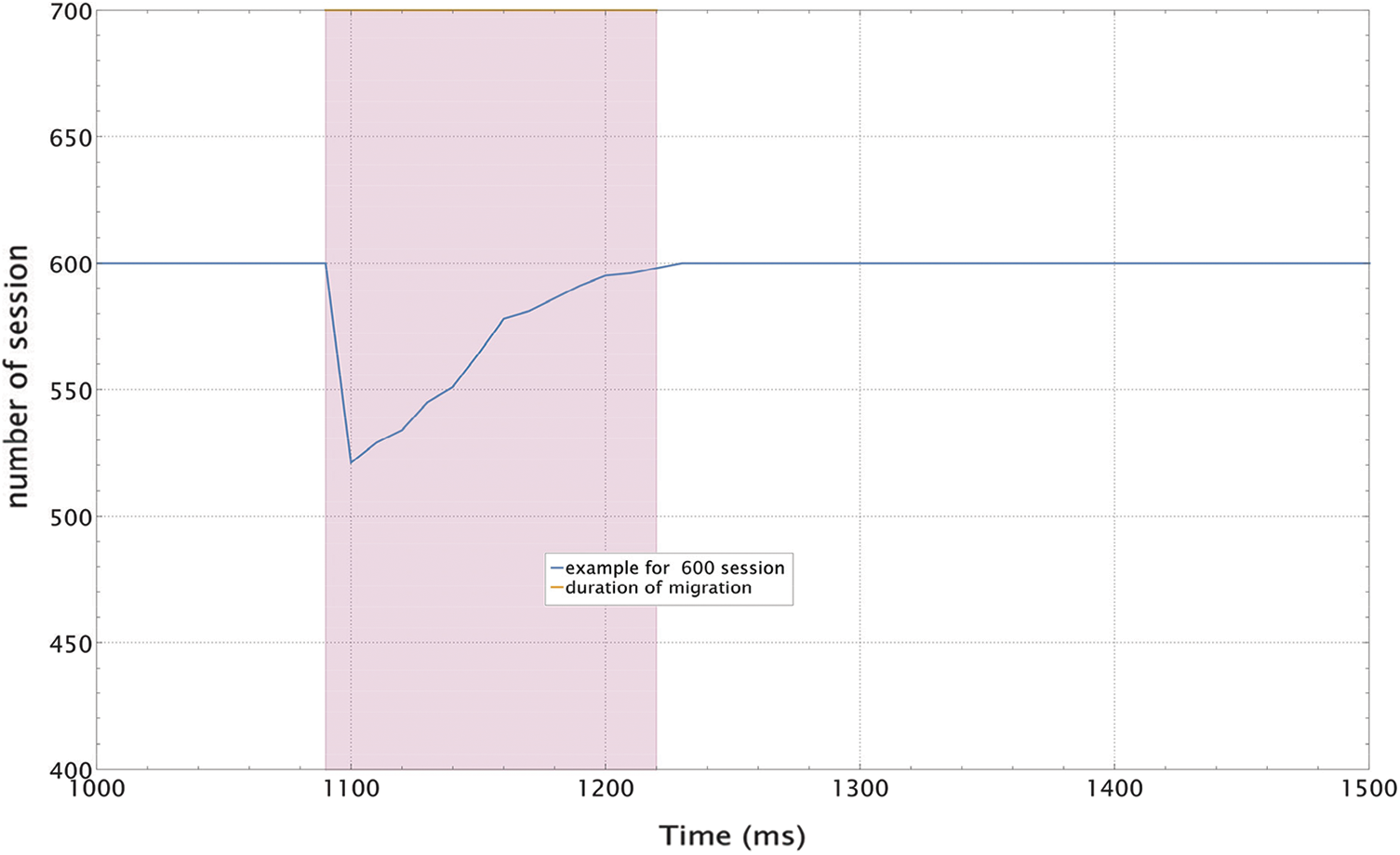
Figure 5: Dependency graph of the migration of the application
As the number of users increases, the average number of broken sessions increases, as introduced in Fig. 6. However, this is not a critical problem since the limitations of computing power caused the errors. The packet loss rate can be reduced by deploying an efficient offloading scheme. Also, the session recovery time does not have large values, as introduced in Fig. 7.
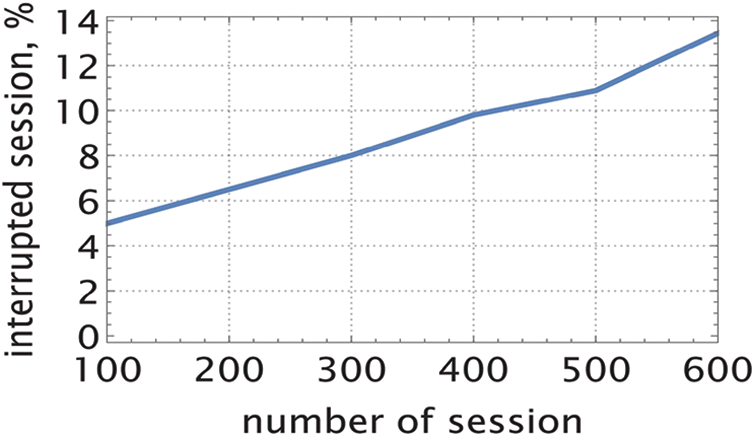
Figure 6: The average number of interrupted sessions
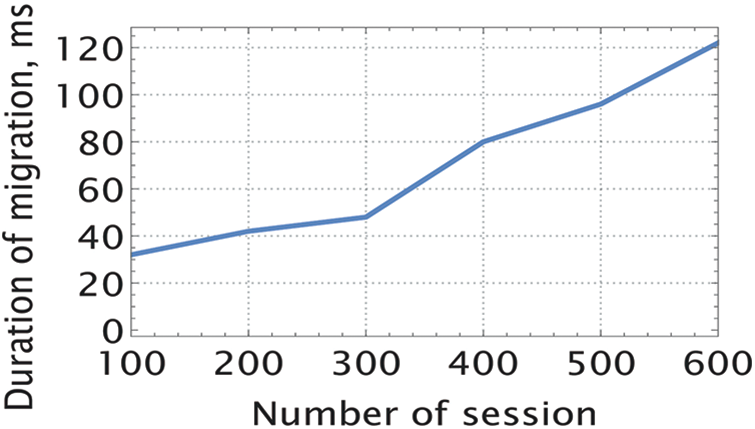
Figure 7: The average migration time depending on the number of sessions
Fig. 7 indicates the average migration time with the number of active sessions. Results indicate that for 600 users, the average recovery time is about 120 ms, which is enough to save the voice link, i.e., frame length of 125 ms.
Also, for all iterations, a graph of the distribution function was plotted for the session recovery time and interrupted sessions. Fig. 8 presents the distribution function of the migration time for different cases of active sessions. Fig. 9 provides the distribution of the number of interrupted sessions for different cases of active sessions.
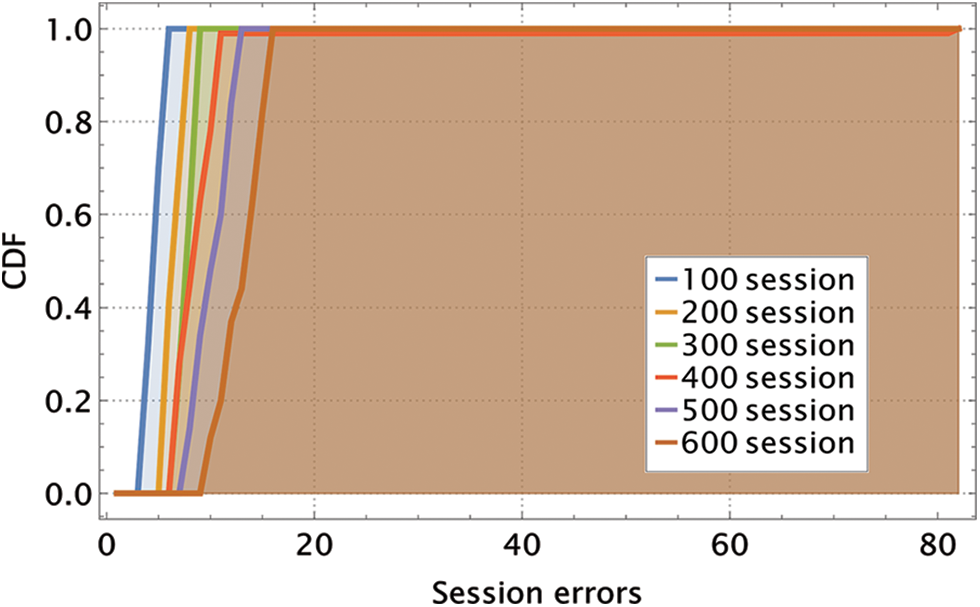
Figure 8: The distribution of the session gaps

Figure 9: The distribution of the migration time
Fig. 10 illustrates the percentage improvement of the latency required to handle each task for the three considered systems. Each system was compared with the traditional network structure with no distributed edge computing units. The developed MEC platform achieves an average improvement in latency efficiency of 11% compared with the traditional MEC structure. This is due to the deployment of the orchestrator that manages the offloaded tasks.

Figure 10: Percentage improvement of latency efficiency
Fig. 11 introduces the improvement of the communication overhead achieved by each system compared with the traditional network structure. The considered MEC platform reduces the communication overhead since it manages the offloaded services in a software-based technique. Furthermore, the percentage of the offloading efficiency is introduced in Fig. 12. The considered scheme improves the offloading efficiency by 17% compared with the existing traditional schemes.
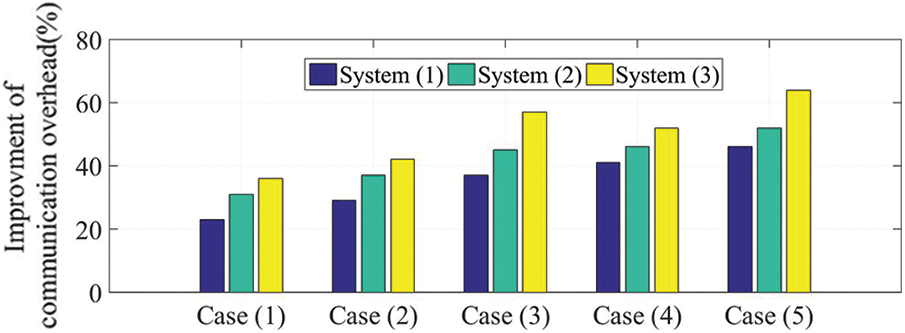
Figure 11: Percentage improvement of the communication overhead
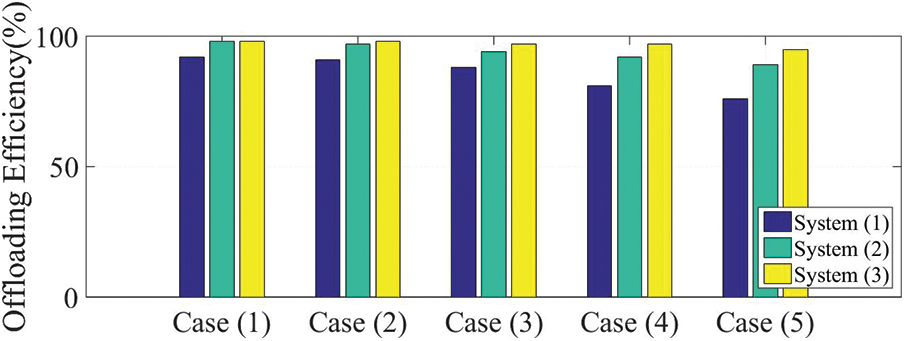
Figure 12: Percentage offloading efficiency
MEC is one of the keys enabling technologies of 5G/6G systems. However, the design of the MEC platform represents a challenge. The work provided a MEC platform for complex 5G/6G tasks. Moreover, a seamless migration scheme was introduced to host such complex tasks over the considered MEC platform efficiently. The proposed method provides a sufficiently reliable level of application migration, limited to the computing power of the MEC nodes. Accordingly, nodes must have about 30% resources and a reliable communication channel between the cloud node and the local MEC node to migrate in working order. These resources must be allocated for the duration of the migration process. Simulation results validated the developed scheme.
Acknowledgement: The authors extend their appreciation to Princess Nourah bint Abdulrahman University Researchers Supporting Project number (PNURSP2022R308), Princess Nourah bint Abdulrahman University, Riyadh, Saudi Arabia.
Funding Statement: This work was supported by Princess Nourah bint Abdulrahman University Researchers Supporting Project Number (PNURSP2022R308), Princess Nourah bint Abdulrahman University, Riyadh, Saudi Arabia.
Conflicts of Interest: The authors declare that they have no conflicts of interest to report regarding the present study.
References
1. N. Shaik and P. K. Malik, “A comprehensive survey 5G wireless communication systems: Open issues, research challenges, channel estimation, multi carrier modulation and 5G applications,” Multimedia Tools and Applications, vol. 80, no. 19, pp. 28789–28827, 2021. [Google Scholar]
2. H. H. H. Mahmoud, A. A. Amer and T. Ismail, “6G: A comprehensive survey on technologies, applications, challenges, and research problems,” Transactions on Emerging Telecommunications Technologies, vol. 32, no. 4, pp. e4233, 2021. [Google Scholar]
3. A. A. Ateya, A. Muthanna, M. Makolkina and A. Koucheryavy, “Study of 5G services standardization: Specifications and requirements,” in Proc. 2018 10th Int. Congress on Ultra Modern Telecommunications and Control Systems and Workshops (ICUMT), Moscow, Russia, IEEE, pp. 1–6, 2018. [Google Scholar]
4. S. Chen, Y. C. Liang, S. Sun, S. Kang, W. Cheng et al., “Vision, requirements, and technology trend of 6G: How to tackle the challenges of system coverage, capacity, user data-rate and movement speed,” IEEE Wireless Communications, vol. 27, no. 2, pp. 218–228, 2020. [Google Scholar]
5. H. Viswanathan and P. E. Mogensen, “Communications in the 6G era,” IEEE Access, vol. 8, pp. 57063–57074, 2020. [Google Scholar]
6. A. Ateya, M. Al-Bahri, A. Muthanna and A. Koucheryavy, “End-to-end system structure for latency sensitive applications of 5G,” Электросвязь, vol. 6, pp. 56–61, 2018. [Google Scholar]
7. C. P. Escribano, N. Theologou, M. Likar, A. Tryferidis and D. Tzovaras, “Business models and use cases for the IoT,” in IoT Platforms, Use Cases, Privacy, and Business Models, Springer, Cham, pp. 51–80, 2021. https://doi.org/10.1007/978-3-030-45316-9_3. [Google Scholar]
8. A. A. Ateya, A. Muthanna, A. Vybornova, I. Gudkova, Y. Gaidamaka et al., “Model mediation to overcome light limitations—Toward a secure tactile internet system,” Journal of Sensor and Actuator Networks, vol. 8, no. 1, pp. 6, 2019. [Google Scholar]
9. M. W. Akhtar, S. A. Hassan, R. Ghaffar, H. Jung, S. Garg et al., “The shift to 6G communications: Vision and requirements,” Human-centric Computing and Information Sciences, vol. 10, no. 1, pp. 1–27, 2020. [Google Scholar]
10. J. T. Penttinen, “On 6G visions and requirements,” Journal of ICT Standardization, vol. 9, pp. 311–326, 2021. [Google Scholar]
11. G. Redmill and E. Bertin, “6G: The path toward standardization,” in Shaping Future 6G Networks: Needs, Impacts, and Technologies, pp. 23–37, 2021. https://doi.org/10.1002/9781119765554.ch3. [Google Scholar]
12. G. Liu and D. Jiang, “5G: Vision and requirements for mobile communication system towards year 2020,” Chinese Journal of Engineering, vol. 2016, no. 2016, pp. 8, 2016. [Google Scholar]
13. R. W. Coutinho and A. Boukerche, “Design of edge computing for 5G-enabled tactile internet-based industrial applications,” IEEE Communications Magazine, vol. 60, no. 1, pp. 60–66, 2022. [Google Scholar]
14. K. Yu, J. Yu and A. Dong, “Cooperative communication and mobility for securing URLLC of future wireless networks,” IEEE Transactions on Vehicular Technology, vol. 71, no. 5, pp. 5331–5342, 2022. [Google Scholar]
15. S. Kumar, “6G mobile communication networks: Key services and enabling technologies,” Journal of ICT Standardization, vol. 10, pp. 1–10, 2022. [Google Scholar]
16. Y. Zhang, “Mobile edge computing for beyond 5g/6g,” in Mobile Edge Computing, Springer, Cham, pp. 37–45, 2022. https://doi.org/10.1007/978-3-030-83944-4_4. [Google Scholar]
17. E. Ahvar, S. Ahvar, S. M. Raza, J. M. S. Vilchez and G. M. Lee, “Next generation of SDN in cloud-fog for 5G and beyond-enabled applications: Opportunities and challenges,” Network, vol. 1, no. 1, pp. 28–49, 2021. [Google Scholar]
18. J. Ortin, P. Serrano, J. Garcia-Reinoso and A. Banchs, “Analysis of scaling policies for NFV providing 5G/6G reliability levels with fallible servers,” IEEE Transactions on Network and Service Management, vol. 19, no. 2, pp. 1287–1305, 2022. [Google Scholar]
19. S. Lai, R. Zhao, S. Tang, J. Xia, F. Zhou et al., “Intelligent secure mobile edge computing for beyond 5G wireless networks,” Physical Communication, vol. 45, pp. 101283, 2021. [Google Scholar]
20. S. Thabet, A. A. Ateya and M. Abo-Zahhad, “Mobile edge computing-based radio access network for tactile internet,” in Proc. 2021 9th Int. Japan-Africa Conf. on Electronics, Communications, and Computations (JAC-ECC), IEEE, Egypt, pp. 119–124, 2021. https://doi.org/10.1109/JAC-ECC54461.2021.9691428. [Google Scholar]
21. S. D. A. Shah, M. A. Gregory, S. Li, R. Fontes and L. Hou, “SDN-Based service mobility management in MEC-enabled 5G and beyond vehicular networks,” IEEE Internet of Things Journal, vol. 2022, pp. 1, 2022. https://doi.org/10.1109/JIOT.2022.3142157. [Google Scholar]
22. T. Lagkas, D. Klonidis, P. Sarigiannidis and I. Tomkos, “Optimized joint allocation of radio, optical, and MEC resources for the 5G and beyond fronthaul,” IEEE Transactions on Network and Service Management, vol. 18, no. 4, pp. 4639–4653, 2021. [Google Scholar]
23. W. Chien, S. Huang, C. Lai and H. Chao, “Resource management in 5g mobile networks: Survey and challenges,” Journal of Information Processing Systems, vol. 16, no. 4, pp. 896–914, 2020. [Google Scholar]
24. A. Islam, A. Debnath, M. Ghose and S. Chakraborty, “A survey on task offloading in multi-access edge computing,” Journal of Systems Architecture, vol. 118, pp. 102225, 2021. [Google Scholar]
25. C. Feng, P. Han, X. Zhang, B. Yang, Y. Liu et al., “Computation offloading in mobile edge computing networks: A survey,” Journal of Network and Computer Applications, vol. 202, pp. 103366, 2022. [Google Scholar]
26. S. Kavyashree and H. A. Chaya Kumari, “Survey on computation offloading strategies in cellular networks with mobile edge computing,” in Proc. Data Intelligence and Cognitive Informatics, Springer, Singapore, pp. 567–575, 2022. [Google Scholar]
27. A. Mukhopadhyay, G. Iosifidis and M. Ruffini, “Migration-aware network services with edge computing,” IEEE Transactions on Network and Service Management, vol. 2021, pp. 1, 2021. https://doi.org/10.1109/TNSM.2021.3139857. [Google Scholar]
28. S. Wang, J. Xu, N. Zhang and Y. Liu, “A survey on service migration in mobile edge computing,” IEEE Access, vol. 6, pp. 23511–23528, 2018. [Google Scholar]
29. S. Moon and Y. Lim, “Task migration with partitioning for load balancing in collaborative edge computing,” Applied Sciences, vol. 12, no. 3, pp. 1168, 2022. [Google Scholar]
30. X. Chen, Y. Bi, X. Chen, H. Zhao, N. Cheng et al., “Dynamic service migration and request routing for microservice in multi-cell mobile edge computing,” IEEE Internet of Things Journal, pp. 1, 2022. https://doi.org/10.1109/JIOT.2022.3140183. [Google Scholar]
31. J. Nakazato, M. Nakamura, T. Yu, Z. Li, K. Maruta et al., “Market analysis of MEC-assisted beyond 5G ecosystem,” IEEE Access, vol. 9, pp. 53996–54008, 2021. [Google Scholar]
32. T. Prastowo, A. Shah, L. Palopoli, R. Passerone and G. Piro, “Migration-aware optimized resource allocation in B5G edge networks,” in Proc. 2022 IEEE 19th Annual Consumer Communications & Networking Conf. (CCNC), IEEE, Las Vegas, NV, USA, pp. 106–113, 2022. https://doi.org/10.1109/CCNC49033.2022.9700644. [Google Scholar]
33. Y. Wang, H. Zhu, X. Hei, Y. Kong, W. Ji et al., “An energy saving based on task migration for mobile edge computing,” EURASIP Journal on Wireless Communications and Networking, vol. 2019, no. 1, pp. 1–10, 2019. [Google Scholar]
34. W. Wu and Y. Jian, “Analysis and research on resource allocation and service migration in mobile edge computing,” in Innovative Computing, Springer, Singapore, pp. 1087–1094, 2022. [Google Scholar]
35. C. Zhang and Z. Zheng, “Task migration for mobile edge computing using deep reinforcement learning,” Future Generation Computer Systems, vol. 96, pp. 111–118, 2019. [Google Scholar]
36. Z. Liang, Y. Liu, T. Lok and K. Huang, “Multi-cell mobile edge computing: Joint service migration and resource allocation,” IEEE Transactions on Wireless Communications, vol. 20, no. 9, pp. 5898–5912, 2021. [Google Scholar]
37. H. Wang, H. Ke, G. Liu and W. Sun, “Computation migration and resource allocation in heterogeneous vehicular networks: A deep reinforcement learning approach,” IEEE Access, vol. 8, pp. 171140–171153, 2020. [Google Scholar]
38. L. Tang, B. Tang, L. Kang and L. Zhang, “A novel task caching and migration strategy in multi-access edge computing based on the genetic algorithm,” Future Internet, vol. 11, no. 8, pp. 181, 2019. [Google Scholar]
39. P. Dai, K. Hu, X. Wu, H. Xing, F. Teng et al., “A probabilistic approach for cooperative computation offloading in MEC-assisted vehicular networks,” IEEE Transactions on Intelligent Transportation Systems, vol. 23, no. 2, pp. 899–911, 2020. [Google Scholar]
40. Y. Miao, G. Wu, M. Li, A. Ghoneim, M. Al-Rakhami et al., “Intelligent task prediction and computation offloading based on mobile-edge cloud computing,” Future Generation Computer Systems, vol. 102, pp. 925–931, 2020. [Google Scholar]
41. G. Brown, “Service-based architecture for 5g core networks,” Huawei White Paper, Huawei, 2017. [Google Scholar]
42. A. A. Ateya, A. Muthanna, A. Vybornova, P. Darya and A. Koucheryavy, “Energy-aware offloading algorithm for multi-level cloud based 5G system,” in Proc. Internet of Things, Smart Spaces, and Next Generation Networks and Systems, Springer, Cham, pp. 355–370, 2018. [Google Scholar]
Cite This Article
 Copyright © 2023 The Author(s). Published by Tech Science Press.
Copyright © 2023 The Author(s). Published by Tech Science Press.This work is licensed under a Creative Commons Attribution 4.0 International License , which permits unrestricted use, distribution, and reproduction in any medium, provided the original work is properly cited.


 Submit a Paper
Submit a Paper Propose a Special lssue
Propose a Special lssue View Full Text
View Full Text Download PDF
Download PDF Downloads
Downloads
 Citation Tools
Citation Tools